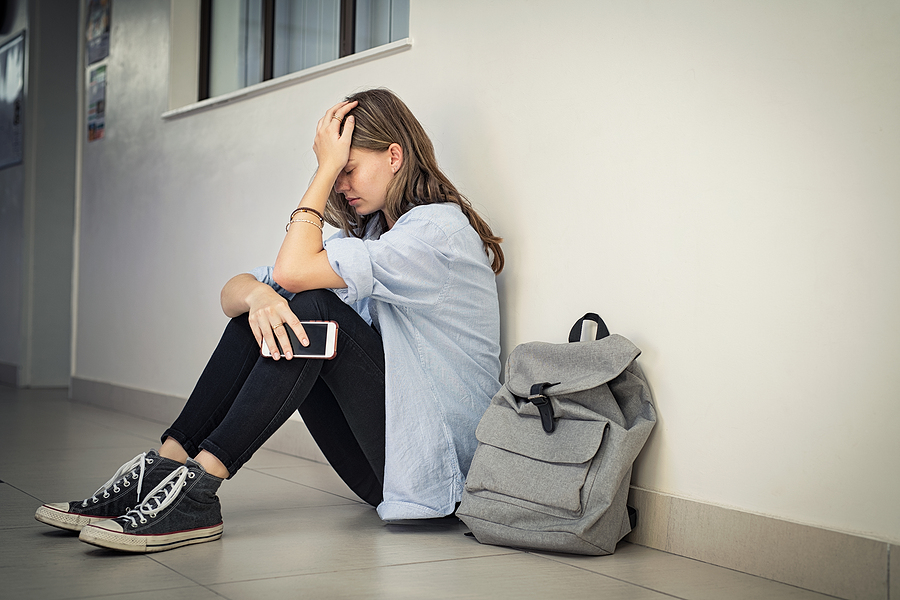
Last week, I performed a site visit to one of our Jubilee Network schools in Philadelphia. As I walked from classroom to classroom, I saw what one might expect nine months into a pandemic: socially-distanced students wearing masks. Desks were all six feet apart (have you ever tried that with a class of seven-year-olds? Not easy!). All the “specials” (classes typically held outside the primary classroom—like music, art, science—even lunch) were being brought in to the primary classroom to minimize students’ time in the corridors. Student movement into and out of the building were carefully choreographed, so that everyone remained socially-distanced. Seeing the planning and work these modifications took made me appreciate how simple things were, and how much we took for granted, just nine months ago.
Much has changed in our schools during the long months of the pandemic. For sure, our schools have become more tech-savvy and more able to accommodate the demands of pandemic education. But all the additional work comes at a cost—a cost borne not only by schools, but by teachers, students, and parents.
Virtually everyone with whom I’ve spoken feels the strain. And some are being crippled by it. Three of the five schools I’ve connected with over the last two weeks have reduced their synchronous learning time each week (the time teachers actively engage with students in real time) due to teacher burnout. Turns out that managing two classrooms (on site and virtual) simultaneously takes a lot more energy than managing one!
Students feel the pressure too. Not only are they impacted by the changes in the classroom and at home because of the pandemic, but they are struggling with anxiety, depression, hopelessness, loneliness, and anger at higher incidences than a year ago. Recent data suggests that the majority of students are impacted by these conditions, though not all to the same degree. That said, other recent data from the Centers for Disease Control and Prevention also shows a 24 percent spike over last year in emergency visits for mental health issues among 5-to-11-year-olds and a 31 percent rise among 12-to-17-year-olds. So, a significant number of students are impacted significantly by these changes.
Parents and guardians, in some ways, bear the biggest burdens. Not only do they experience their children’s suffering, but many of them also need to help students navigate school work because direct time with teachers is cut. Parents of children in need of school-provided support because of learning or emotional differences may see those services either less effective because of the virtual environment in which they are administered, or because their children are struggling more profoundly than nine months ago.
Plus, many parents and guardians are struggling with the financial fallout of the pandemic. Philadelphia-area unemployment is stubbornly higher than the national average. Heads of households, particularly those of color and those working in service and hospitality industries, are disproportionately affected. Food insecurity now affects one in five Philadelphia-area residents. There are real concerns about a pending wave of evictions after January 1, when federal protections expire and millions of renters currently behind in rent payments will be at risk for losing their homes. Again, people of color will be disproportionately affected. All this weighs on the minds and hearts of parents and guardians in our schools. Their children see what’s going on, and suffer secondhand stress. In turn, this impacts peers, teachers, and schools.
Everyone is in crisis right now. What can we do?
Be honest. Acknowledge this is hard. As a society, we’re collectively experiencing something that hasn’t happened since our great-grandparents’ era. This is a hard time. The writer of Ecclesiastes tells us that there is:
“a time to weep, and a time to laugh;
a time to mourn, and a time to dance…”
(Ecclesiastes 3:4)
My own opinion is that for most of us, 2020 definitely falls into the weeping and mourning category. Don’t be afraid or ashamed to acknowledge that present reality. It’s where many of us are.
And that isn’t necessarily a bad place to be. We don’t often seek God unless we feel we need to. Today, God is the only One who can truly give us what we need. Perhaps he wants you to reach out and seek him now.
Pray. God promised his people in the past: “…[C]all upon me and come and pray to me, and I will hear you” (Jeremiah 29:12). He told them to do that while they also were in the midst of a national crisis, uncertain about their future. Praying can be difficult, particularly when you don’t seem to know what to say. All God wants us to do is to tell him what we’re feeling and what we’re afraid of. And he wants us to know that he hears us, and is with us.
Give your students a place to speak. As adults, we’re anxious. But as we pointed out earlier, kids are even more anxious than we are…but lack the resources to talk about and understand how they’re feeling. Help them do that as much as possible. Ask your student how he or she is hearing and experiencing the circumstances around them. Ask what they’re afraid of. Don’t be surprised if they can’t talk about it easily—most kids can’t. But be present with them, acknowledge that what you’re both going through really is hard, reassure them that you’ll always be with them and that God loves them, and pray with them.
Realize the hard “now” is not forever. This is a hard season. But the pandemic will end. Things will probably begin improving in a few months. Perhaps some time in 2021 life will be relatively normal again. Sometimes just acknowledging that a hard thing isn’t a forever thing is helpful.
Get help coping for yourself or your student, if you need it. There is no shame asking for help. These are bigger issues than any of us can work through on our own. If your student could use some help with anxiety, depression, stress, or other issues, the best place to begin finding help is with your pediatrician or school. One additional resource might be Children’s Hospital of Philadelphia’s Pediatric Psychology Department.
There are several good free print and video resources available to you as well. Here is a link to some from the Christian Counseling and Education Foundation (CCEF). And here are some resources put together by EPIC Church in Philadelphia.
For yourself, finding a trusted friend to talk with can sometimes be enough. But if you feel as though you’d benefit from some more professional resources, some options are:
- CCEF
- Resources recommended by EPIC Church
- Resources recommended by Liberti Church
_____________
This is a hard time. And it is a defining time for us as a people. But you aren’t alone. And we aren’t alone. We have a God who loves us and, somehow, will bring us through.

Tim Geiger (M.Div.) is Executive Director of Children's Jubilee Fund. Born and raised in Philadelphia, Tim has lived in or around the city most of his life. His undergraduate studies done at the Community College of Philadelphia, Tim went on to earn a Master of Divinity Degree from Westminster Theological Seminary. He is ordained as a Teaching Elder in the Presbyterian Church in America. Prior to serving at Children's Jubilee Fund, Tim worked for the Internal Revenue Service, The Alliance of Confessing Evangelicals, and Harvest USA, where he also served as Executive Director and then President from 2012-2019. Tim lives with his wife and daughter just outside of Philadelphia.

Children's Jubilee Fund is a 501(c)(3) organization established in 1997 to provide tuition grants to Christian schools in the Philadelphia metro area that serve lower-income students. These grants are then awarded by the schools as scholarships to students who meet income and residency guidelines. Each year, Jubilee provides hundreds of thousands of dollars in grants that, in turn, help hundreds of students in Philadelphia, Delaware, Montgomery, and Camden Counties achieve their God-given academic and personal potential. Children's Jubilee Fund is an entirely donor-supported organization.
